As a frequent tanning bed user, I know how important it is to keep the equipment clean and sanitized. Not only does regular cleaning ensure the longevity and performance of the tanning bed, but it also helps to keep your skin safe and healthy. In this article, I will share my knowledge and research on what to clean a tanning bed with, including the materials needed, the cleaning process, and homemade cleaning options.
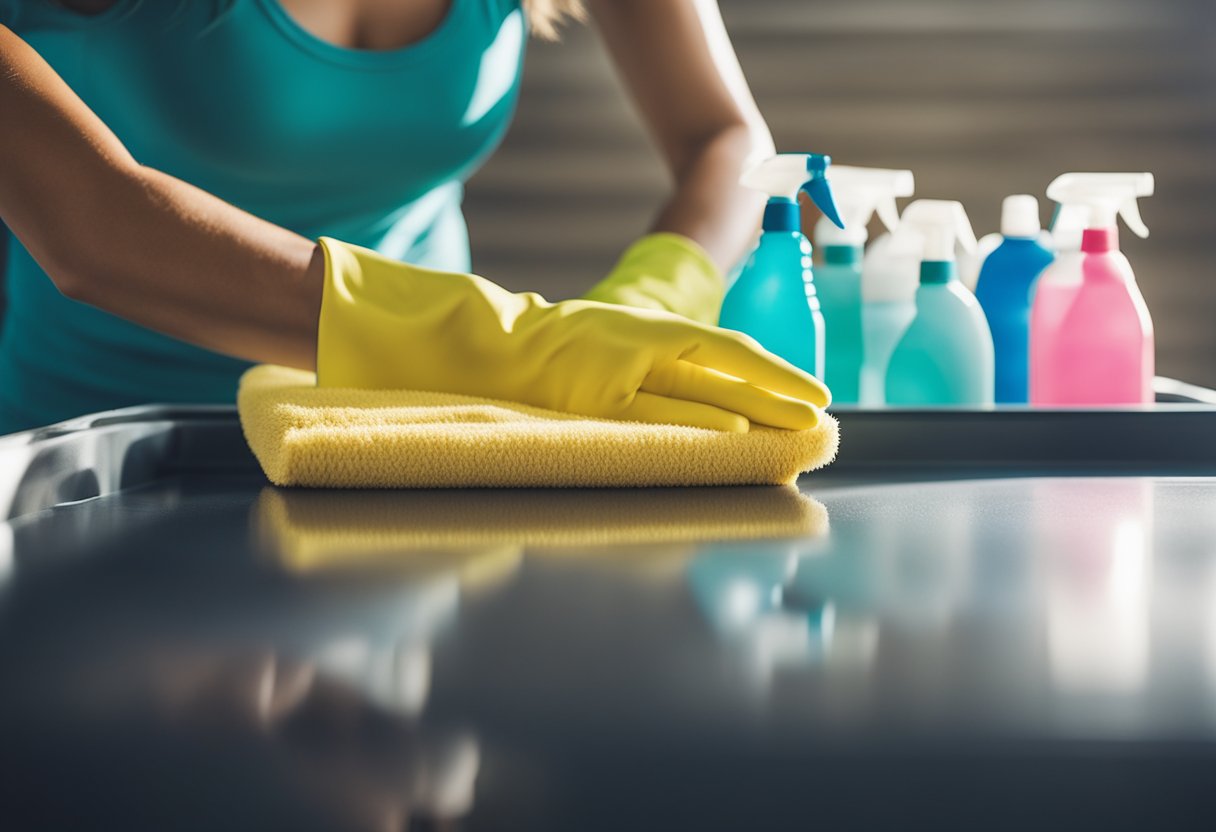
Understanding the importance of cleaning tanning beds is the first step towards ensuring a safe and effective tanning experience. Without proper cleaning, tanning beds can harbor germs, bacteria, and other harmful microorganisms that can lead to skin infections and other health issues. By regularly cleaning and sanitizing the tanning bed, you can reduce the risk of infection and ensure that your skin stays healthy and radiant.
When it comes to cleaning a tanning bed, there are several materials and cleaning agents that you will need. These include microfiber cloths, white vinegar, lemon juice, baking soda, and cream of tartar. In the following sections, I will outline the cleaning process and provide more information on these materials and cleaning agents.
Key Takeaways
- Regular cleaning and sanitization of tanning beds is crucial for ensuring the longevity and performance of the equipment, as well as for maintaining healthy skin.
- Materials needed for cleaning a tanning bed include microfiber cloths, white vinegar, lemon juice, baking soda, and cream of tartar.
- Homemade cleaning options using natural ingredients like vinegar and lemon juice can be effective and safe alternatives to store-bought cleaning agents.
Understanding the Importance of Cleaning Tanning Beds

As a frequent tanning bed user, I understand the importance of maintaining a clean and hygienic tanning bed. Tanning beds can harbor bacteria, germs, and viruses that can cause skin irritation and other health problems. Therefore, it’s crucial to clean your tanning bed regularly using the right cleaning solution.
When tanning beds are not cleaned properly, they can become breeding grounds for bacteria and germs. These microorganisms can cause skin infections, rashes, and other health problems. Moreover, a dirty tanning bed can also lead to skin irritation and allergic reactions, which can be very uncomfortable.
In addition to the health risks, a dirty tanning bed can also affect the quality of your tan. Dirt and oil can build up on the tanning bed’s surface, which can block the UV rays and reduce the effectiveness of your tanning session. Therefore, it’s essential to keep your tanning bed clean to ensure that you get the best possible results.
To maintain the hygiene and safety of your tanning bed, it’s crucial to use the right cleaning solution. Using the wrong cleaning product can damage the tanning bed’s surface and reduce its lifespan. Therefore, it’s essential to use a cleaning solution that is specifically designed for tanning beds.
Regular cleaning of your tanning bed not only helps to keep it clean and hygienic but also helps to extend its lifespan. By cleaning your tanning bed regularly, you can prevent dirt and oil buildup, which can cause premature wear and tear.
In summary, cleaning your tanning bed is essential for maintaining hygiene, safety, and the quality of your tan. By using the right cleaning solution and cleaning your tanning bed regularly, you can ensure that you get the best possible results from your tanning sessions.
Materials Needed for Tanning Bed Cleaning
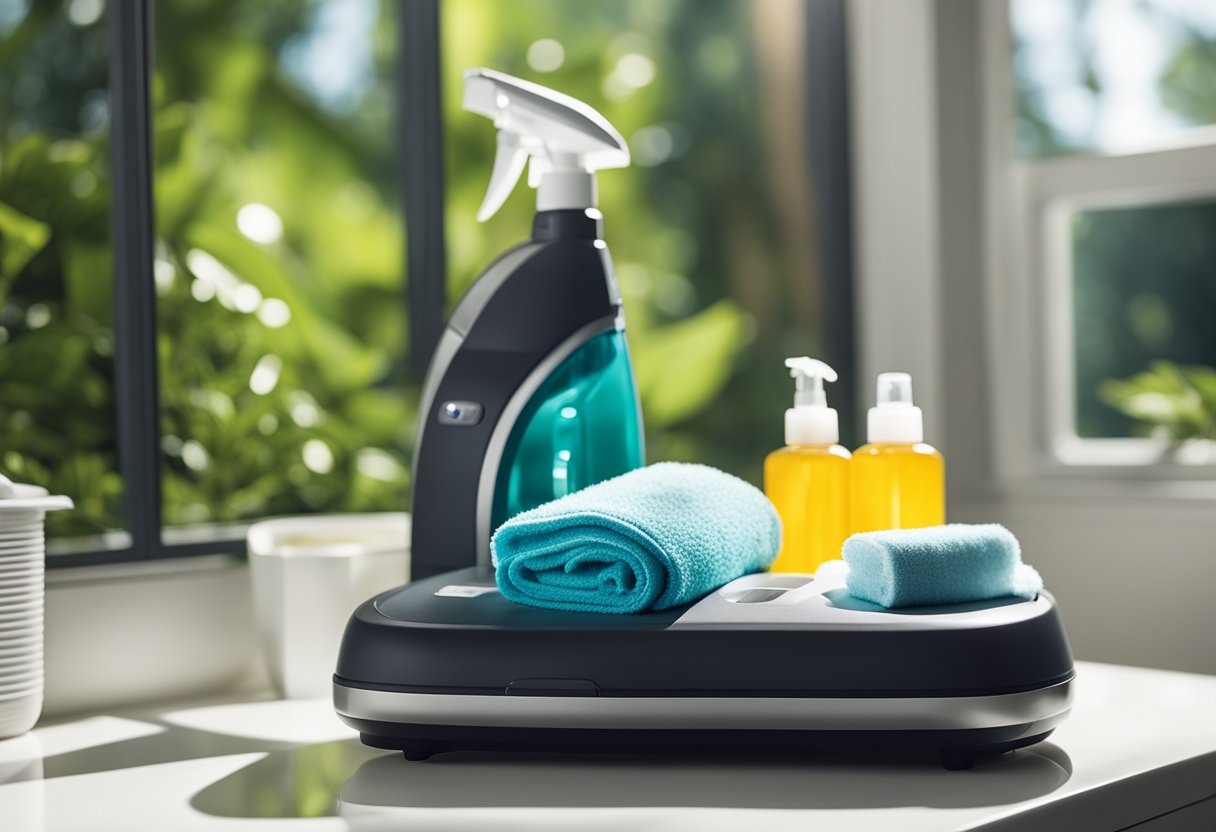
As a tanning bed owner, I have found that regular cleaning of the tanning bed is essential to maintain its functionality and hygiene. The materials needed for cleaning a tanning bed are quite simple and easy to find. Here are the materials that I recommend:
-
Disinfectant: A disinfectant is an essential material for cleaning a tanning bed. It helps to kill bacteria, viruses, and fungi on the tanning bed. You can use a tanning bed disinfectant or a commercial tanning bed cleaner.
-
Cleaner: A cleaner is used to remove dirt, sweat, and oils from the tanning bed. You can use soap, alcohol, or a commercial tanning bed cleaner.
-
Solution: A solution is needed to mix with the cleaner or disinfectant. You can use water or a tanning bed cleaning solution.
-
Spray bottle: A spray bottle is used to apply the disinfectant, cleaner, or solution to the tanning bed.
-
Towel: A towel is needed to wipe and dry the surfaces of the tanning bed. You can use a microfiber cloth or any clean towel.
-
Gloves: Gloves are essential to protect your hands from chemicals and dirt.
-
Clean water: Clean water is needed to rinse the tanning bed after cleaning.
-
Supplies: You may also need other supplies such as a brush or a vacuum cleaner to remove dirt and dust from hard-to-reach areas.
By using these materials, you can clean your tanning bed effectively and maintain its hygiene.
The Cleaning Process
As a tanning bed owner, it is important to keep your equipment clean and well-maintained to ensure customer satisfaction and safety. The cleaning process should be done regularly to remove dirt, sweat, and residue that accumulates on the acrylic surface, fans, bulbs, lamps, filters, and ballast tray.
To start, I recommend turning off the tanning bed and unplugging it from the power source. This will prevent any electrical accidents while cleaning. Then, remove any debris or loose dirt from the surface of the tanning bed using a soft brush or cloth.
Next, use a cleaning solution that is safe for the acrylic surface of the tanning bed. Avoid using harsh chemicals that can damage the surface or cause skin irritation. One effective solution for cleaning tanning beds is a mixture of water and vinegar. This combination is both gentle on the equipment and effective at removing dirt and grime. Simply mix equal parts water and vinegar in a spray bottle, and spray the solution onto a clean cloth.
After cleaning the surface, move on to the fans, bulbs, lamps, filters, and ballast tray. These areas can accumulate dust and debris, which can affect the performance of the tanning bed. Use a soft brush or cloth to remove any dirt or debris from these areas. For more thorough cleaning, you may need to remove the filters and clean them separately.
Finally, wipe down the entire tanning bed with a clean, dry cloth to remove any excess moisture. This will prevent any water damage to the electrical components of the tanning bed.
Overall, regular cleaning and maintenance of your tanning bed is essential to ensure its longevity and performance. By following these simple steps, you can keep your tanning bed clean and safe for your customers.
Special Attention to Acrylic Surfaces
As a tanning bed user, I know how important it is to keep the acrylic surfaces clean. Not only does it ensure a germ-free tanning session, but it also extends the life of the tanning bed. Here are some tips on how to clean the acrylic surfaces of your tanning bed:
-
Regular Cleaning and Disinfecting: To ensure a clean and germ-free tanning session, it is important to clean and disinfect the acrylic surface regularly. Start by removing any loose debris or dirt using a soft, lint-free cloth. Avoid using abrasive materials or harsh chemicals that can scratch or damage the acrylic. Instead, use a mild soap and water solution or a natural disinfectant like lemon juice or lavender essential oil.
-
Avoid Using Alcohol-Based Cleaners: While alcohol-based cleaners are effective at killing germs, they can warp or crack the acrylic surface. It is important to use a cleaner that is gentle on the acrylic and won’t cause any damage.
-
Use a Damp Cloth: When cleaning the acrylic surface, it is important to use a damp cloth instead of a wet one. Excess water can seep into the cracks and crevices of the tanning bed, causing damage over time.
-
Pay Attention to the Corners and Edges: When cleaning the acrylic surface, make sure to pay special attention to the corners and edges of the tanning bed. These areas can often collect dirt and debris, so it’s important to clean them thoroughly.
Overall, keeping the acrylic surfaces of your tanning bed clean is essential for a safe and effective tanning experience. By following these tips, you can ensure that your tanning bed stays in top condition for years to come.
Homemade Tanning Bed Cleaner Options
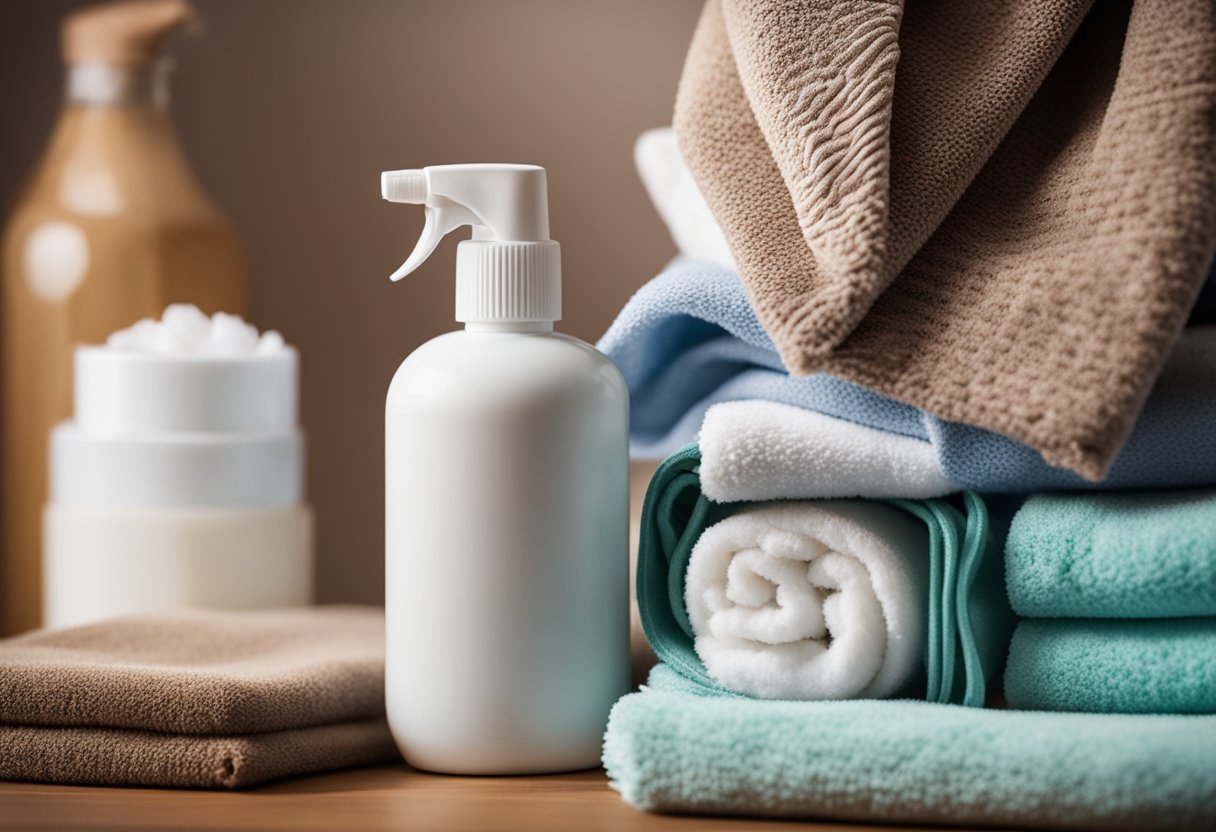
When it comes to cleaning your tanning bed, there are several homemade options that you can use. These options are not only affordable but also effective in getting rid of grime, germs, and other gunk on your tanning bed. Here are some of the best homemade tanning bed cleaner options:
White Vinegar
White vinegar is a natural cleaning agent that can be used to disinfect your tanning bed. It is effective in removing grime and dirt on the bed’s surface. To use white vinegar as a cleaner, mix equal parts of white vinegar and water in a spray bottle. Spray the solution on the bed’s surface and let it sit for a few minutes before wiping it off with a clean cloth.
Essential Oils
Essential oils such as tea tree oil, lavender oil, and lemon oil are great natural cleaning agents that can be used to clean your tanning bed. These oils have antibacterial and antifungal properties that can help kill germs on the bed’s surface. To use essential oils as a cleaner, mix a few drops of your preferred oil with water in a spray bottle. Spray the solution on the bed’s surface and wipe it off with a clean cloth.
DIY Tanning Bed Cleaner
If you prefer to make your own tanning bed cleaner, there are several DIY options that you can try. One popular recipe involves mixing white vinegar, water, and lemon juice in a spray bottle. Another recipe involves mixing dish soap, water, and essential oils in a spray bottle. These DIY cleaners are effective in removing dirt and grime on your tanning bed’s surface.
In conclusion, there are several homemade tanning bed cleaner options that you can use to keep your tanning bed clean and disinfected. Whether you prefer to use white vinegar, essential oils, or DIY cleaners, these options are affordable and effective in getting rid of germs and dirt on your tanning bed’s surface.
Cleaning Agents to Avoid
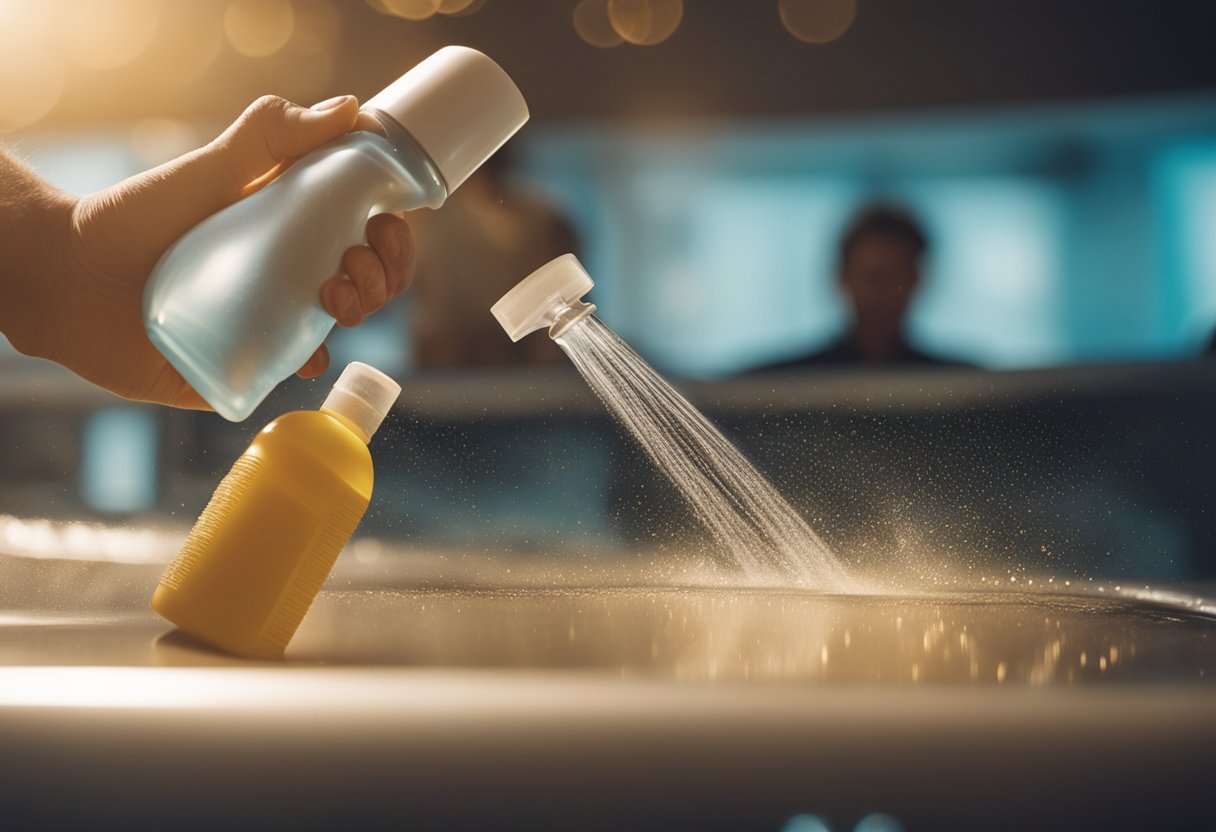
As a tanning bed owner, it is important to know what cleaning agents to avoid when cleaning your equipment. Using the wrong cleaning agents can damage the acrylics used in tanning beds, affecting the machine’s performance.
One cleaning agent to avoid is bleach. Bleach is a harsh chemical that can cause discoloration and damage to the surface of your tanning bed. It can also cause irritation to the skin and respiratory system. Therefore, it is best to avoid using bleach when cleaning your tanning bed.
Another cleaning agent to avoid is ammonia. Ammonia can cause damage to the acrylics used in tanning beds, affecting the machine’s performance. It can also cause irritation to the skin and respiratory system. Therefore, it is best to avoid using ammonia when cleaning your tanning bed.
It is also important to avoid using any abrasive cleaning agents, as they can scratch the surface of your tanning bed. Scratches can not only damage the surface of your tanning bed but also create a breeding ground for bacteria and germs.
In conclusion, when cleaning your tanning bed, it is best to avoid using bleach, ammonia, and abrasive cleaning agents. Instead, opt for gentle cleaning agents like white vinegar, essential oils, and lemon juice. These natural cleaning agents are fantastic ways to remove grout, germs, and other gunk on your tanning bed without causing any damage to the acrylics used in tanning beds.
Ensuring Longevity and Performance
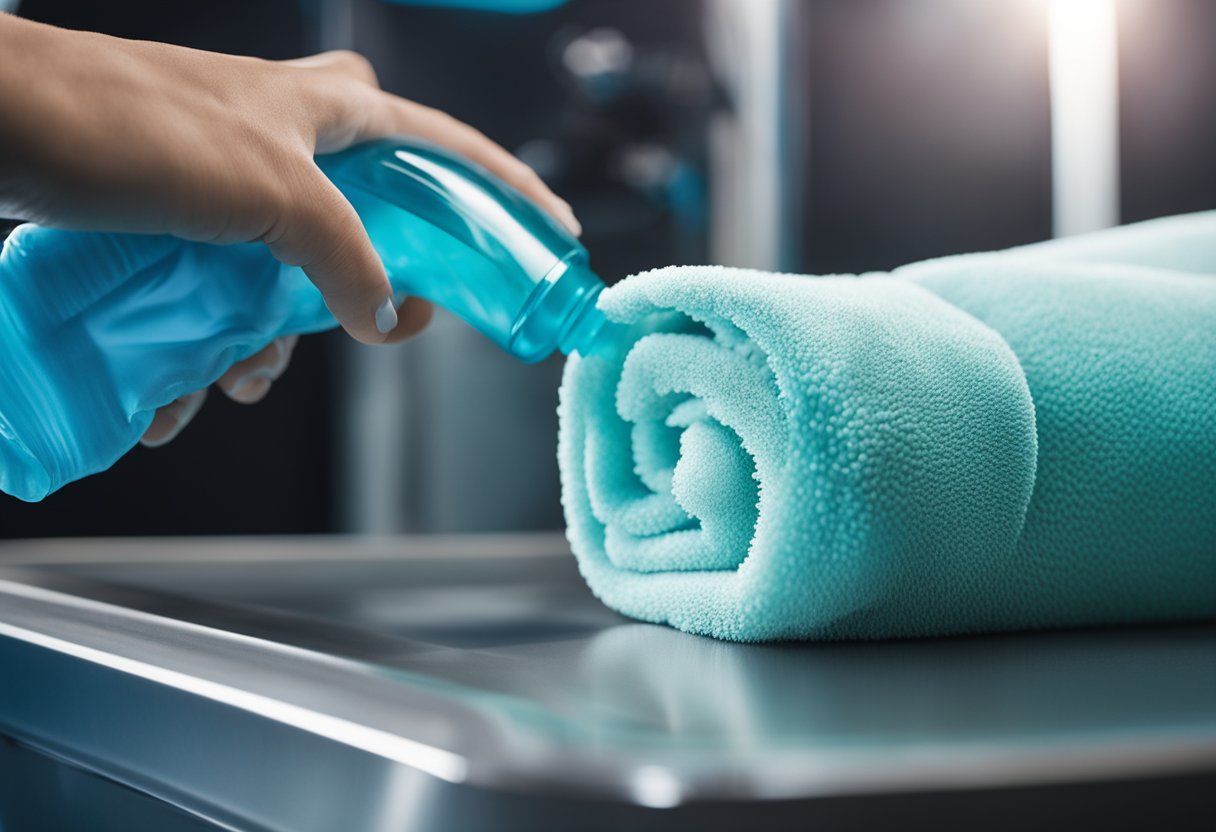
As a tanning bed owner, I want to ensure that my equipment is always in top condition. Regular cleaning and maintenance are crucial to guarantee the longevity and performance of the tanning bed.
To maintain the tanning bed’s performance, I recommend following the manufacturer’s instructions for cleaning and maintenance. This includes using the appropriate cleaning products and avoiding abrasive materials that could scratch or damage the acrylic surface.
When cleaning the tanning bed, I prefer to use a soft, lint-free cloth to remove any loose debris or dirt. I also use a disinfectant to kill bacteria, viruses, and fungi on the tanning bed. It’s important to use a cleaning solution specifically designed for tanning beds, as regular cleaning products can damage the bed’s surface and potentially harm my skin.
To keep my tanning experience pleasant, I also make sure to wipe down the surfaces of the tanning bed with a clean cloth after each use. This removes any sweat, oils, or other residue that may have accumulated during the tanning session.
In addition to regular cleaning, I also perform routine maintenance on my tanning bed. This includes checking the bulbs, fans, and other components to ensure they are functioning properly. If I notice any issues, I contact a professional technician for repairs or replacement.
By following these simple steps, I can ensure that my tanning bed remains in top condition and provides me with a satisfying tanning experience for years to come.
The Importance of Regular Sanitization
As a tanning bed owner, I understand the importance of regular cleaning and sanitization. Not only does it keep the bed looking good, but it also ensures that it is safe and hygienic for use. Regular cleaning can help prevent the buildup of dirt, germs, and bacteria, which can cause skin irritation and infection.
To keep my tanning bed clean, I use a disinfectant specifically designed for tanning beds. Regular cleaning products can damage the bed’s surface and potentially harm the skin. Using a tanning bed cleaning solution is important for several reasons. It can sanitize and clean the tanning bed without necessarily cleaning the tanning bed itself.
It is recommended to sanitize the tanning bed after each use to prevent the spread of germs and bacteria. The bed’s surface can harbor bacteria and viruses, which can be easily transmitted from person to person. Sanitizing the bed can help prevent the spread of infection and keep the bed safe for use.
In addition to regular sanitization, it is also important to clean the tanning bed thoroughly on a regular basis. This includes wiping down the bed’s surface with a damp cloth and cleaning the bulbs. Cleaning the bulbs can help extend their lifespan while increasing their overall efficiency.
In conclusion, regular cleaning and sanitization of tanning beds are essential to keep the bed looking and feeling like new, and to ensure its safety and longevity. By following these guidelines, tanning bed owners can help prevent the spread of infection and keep the bed safe and hygienic for use.
Frequently Asked Questions
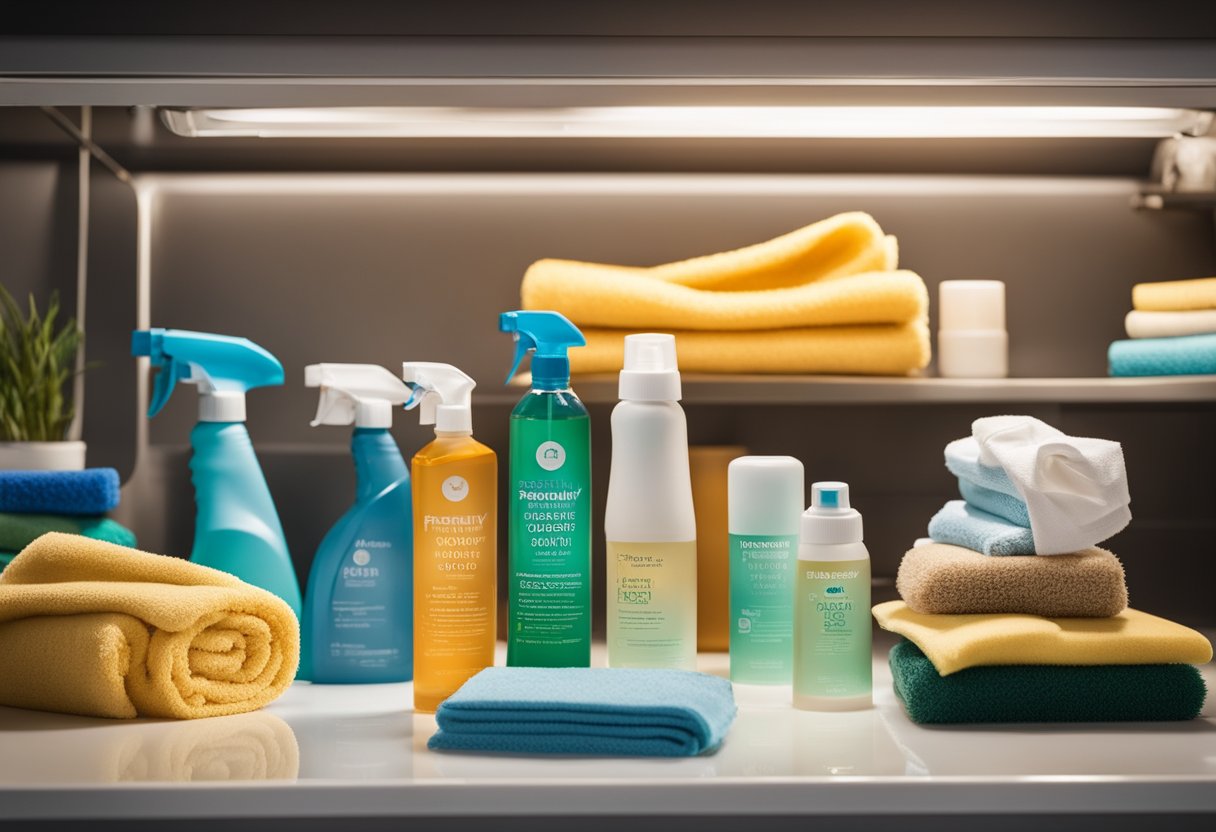
What is the best cleaner to use on tanning beds?
The best cleaner to use on tanning beds is a disinfectant solution that is specifically designed for tanning beds. These solutions are formulated to kill bacteria, viruses, and fungi that can accumulate on the surface of the bed. You can find these cleaners online or at your local tanning salon. It is important to read the instructions carefully and follow them closely to ensure that you are using the cleaner correctly.
Can you clean a tanning bed with vinegar?
While vinegar is a natural cleaner that can be used to clean many surfaces, it is not recommended to clean a tanning bed with vinegar. Vinegar can damage the surface of the bed and cause it to deteriorate over time. It is best to use a cleaner that is specifically designed for tanning beds.
How do you disinfect a surface in a tanning salon?
To disinfect a surface in a tanning salon, you should use a disinfectant solution that is specifically designed for tanning beds. You can find these solutions online or at your local tanning salon. It is important to read the instructions carefully and follow them closely to ensure that you are using the cleaner correctly. You should also wear gloves while cleaning to protect your hands from chemicals and dirt.
What is the best thing to use in a tanning bed?
The best thing to use in a tanning bed is a tanning lotion that is specifically designed for indoor tanning. These lotions contain ingredients that help to moisturize your skin and enhance your tan. You can find these lotions online or at your local tanning salon. It is important to read the instructions carefully and follow them closely to ensure that you are using the lotion correctly.
Can you clean tanning beds with Clorox wipes?
It is not recommended to clean tanning beds with Clorox wipes. Clorox wipes are not designed for use on tanning beds and can damage the surface of the bed. It is best to use a cleaner that is specifically designed for tanning beds.
What are the benefits of using tanning bed cleaner wipes?
Tanning bed cleaner wipes are a convenient way to clean and disinfect your tanning bed. These wipes are pre-moistened with a disinfectant solution that is specifically designed for tanning beds. They are easy to use and can be used to clean the surface of the bed quickly and efficiently. Using tanning bed cleaner wipes can help to keep your tanning bed clean and hygienic, which is important for your health and safety.

Hi, I’m Sal Muller of Tooltrip.com. My DIY experience led me to understand essential power tools for home projects. Tooltrip.com guides enthusiasts and professionals in choosing right tools for any job. I provide concise top tool reviews for easier, efficient DIY.

